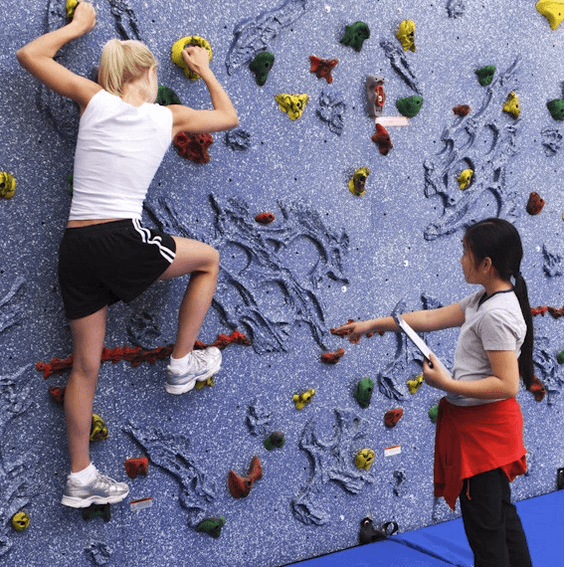(2 Minute Read)
If you are a climbing wall instructor or physical educator with climbing as part of your program, you know firsthand that some people are natural climbers. They instinctively put their bodies in the optimal positions to get across or up the climbing wall, while others need direct instruction.

In order to help climbers progress, it’s good to know what to look for so that you can help your climbers improve over time. In the early stages, climbers should work to master the following basic climbing technique.
Basic Climbing Technique:
Body position
- Climb with legs first/lead with legs
- Hips close to the wall
- Climb facing the wall or sideways
- Knees slightly bent
- Maintain 3 points of contact
Arms & Hands
- Maintain balance
- Lightly grip handholds
Legs & Feet
- Hold the weight
- Use inside or outside edge of foot
Over time, climbers will become more comfortable on the wall. They will start to anticipate their next move and will develop more fluid and controlled movements. Their upper bodies will also be more relaxed. At this point, they’re ready to employ more advanced climbing moves with their arms, hands, legs, and feet. Some climbers will start doing these naturally, while others need to have them directly taught. Here are some advanced climbing moves to try!
Advanced Climbing Moves
Cross Over

Undercling

Match

Smear

About Everlast Climbing
Everlast Climbing is committed to improving youth fitness with dynamic and innovative products that engage children and inspire physical activity. The company is headquartered in Minneapolis, MN, and is a PlayCore company. More information is available about Everlast Climbing at www.everlastclimbing.com.
